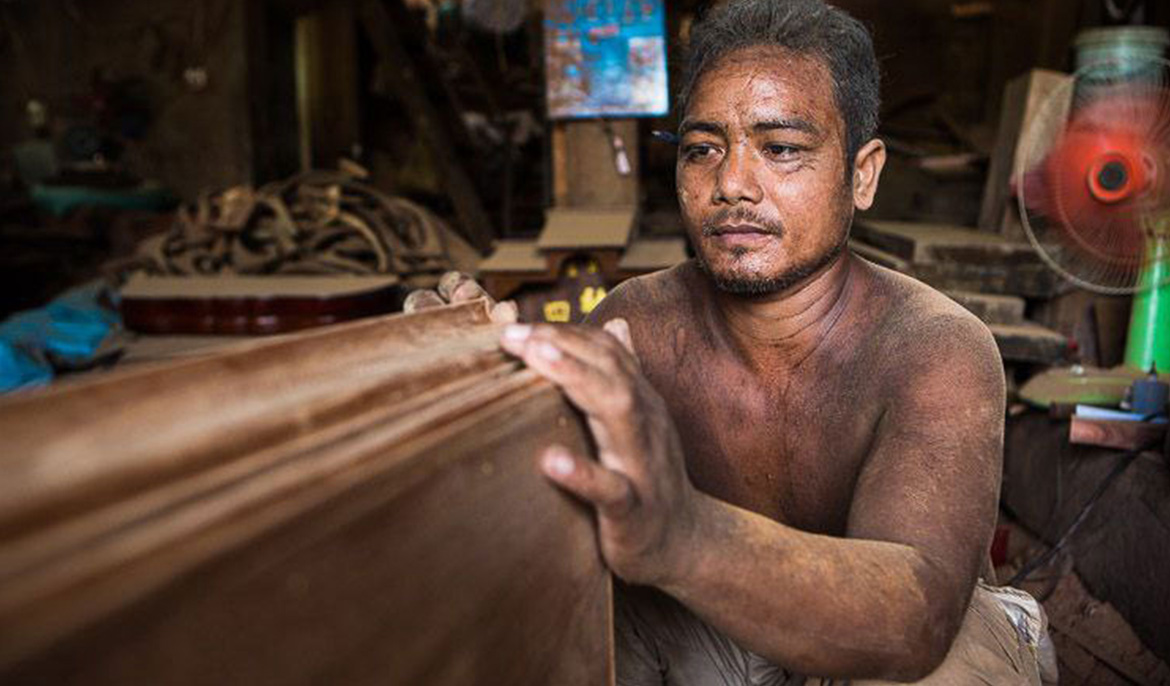Revenue from Cambodia-based furniture production and trade has the potential to increase tenfold by 2033, expected to reach a total market value of $1.484 billion, according to a new ‘Research and Markets’ report published on Yahoo Finance this month.
The report, entitled the ‘Cambodia Furniture Industry Research Report, 2013-2022 & 2023-2033’, surveys past and present trends, along with the key factors that suggest Cambodia’s potential for swift growth in the furniture production and export sector in the coming years.
The report confirmed that the main growth driver of the Cambodian furniture industry market in future relies on exports.
According to the analysis, a recent slump in the furniture trade sector reflects an anomaly, and longer-term trends remain highly positive.
Cambodia’s furniture export value in 2023 totalled at approximately $890 million, according to the report. This achievement reflected a year-on-year decrease of 6.18 percent compared to 2022.
Despite the decline in the value of Cambodia’s furniture exports in 2023, however, the country’s furniture manufacturing industry has seen significant growth over the past five years.
Between 2019 and 2023, the value of Cambodia’s furniture exports grew from around $419 million in 2019 to $890 million in 2023, which represented a compound annual growth rate (CAGR) of 20.7 percent.
Based on this overall growth, the report concludes that Cambodia’s furniture export value is expected to continue to rise from 2024 to 2033 in a similar trajectory.
Cambodia’s furniture exports are expected to reach $1.484 billion in 2033, predicted the report, growing at a CAGR of 5.5 percent between the years 2024 until 2033.
The report also noted various factors that are expected to fuel this sector’s growth moving forward.
Firstly, Cambodia has rich environmental resources which are conducive to the development of the furniture industry in Cambodia.
Most importantly, the report said that Cambodia has forest coverage of close to 60 percent of national territories, including timber reserves of about 1.1 billion cubic meters.
This abundance of raw materials provides the base for ongoing growth in the sector.
Secondly, Cambodia also looks set to benefit from industrial transfers by large furniture production companies from overseas, in particular China.
Industrial transfers have become a common trend in the global furniture sector as companies realize the benefits of relocating production operations to territories with lower costs of labour, preferential trade agreements with international markets and sources of other production inputs.
The report noted the large influence of China as the world’s largest furniture producer and furniture exporter.
China’s furniture output value contributes more than a quarter of the world’s total output.
The report states that with the rise of China’s comprehensive cost of labour, land, and energy in recent years, the cost-effectiveness of furniture manufacturing in China is not as efficient as it used to be.
Hence, Chinese companies are looking for a transfer of production operations, and South East Asia has become the primary target for them.
The report cited examples such as leading Chinese furniture companies such as Gu Home Furnishings, Minhua Holding, Yongyi, and Markor Home Furnishings, along with other leading Chinese furniture manufacturers, which started investing in factories in Vietnam as early as 2018-2019.
In addition, customized furniture companies such as Zhi Bang Furniture and Sofia have opened overseas retail stores in Southeast Asian countries such as Vietnam, Thailand, the Philippines, and Cambodia.
Cambodia also has attractive labour costs compared to international comparisons, which is likely to attract increased investment in furniture production in upcoming years.
However, the report noted that Cambodia’s minimum wage is already higher than some regional alternatives and may affect incoming foreign direct investment (FDI) in the sector.
Cambodia’s minimum monthly salary was $194 in 2022, and was increased to $204 from January 2024, the report noted.
This is higher compared to neighbouring countries such as Vietnam and Laos.
The report noted that Vietnam has a minimum monthly salary of less than $200 in 2024. Lower still, Laos now has a minimum monthly salary of only $77. (khmertimeskh)



